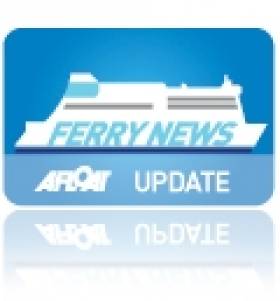Displaying items by tag: Sten A Olsson
Stena Line Founder Sten A. Olsson Dies Aged 96
#FerryFounder - Sten Allan Olsson, the founder of Stena Line has died last week aged 96, reports the Belfast Newsletter.
The Swede had established the ferry company which operates routes between Ireland and Britain and throughout Scandinavia.
Sten Allan Olsson was "one of Sweden's greatest entrepreneurs of all time", according to Stena Metall Group, and built up a group of companies that produced a total revenue of over 68,848,000,000 SEK (£6,833,577,088) in 2012.
The foundations were laid in 1939 and now the Olsson family empire, Stena Sphere, boasts three companies which span freighting, passenger ferries, recycling and international steel and oil trading.
The Olsson family still own the ferry firm in which his son Dan is the chairman of the ferry giant which as previously reported on Afloat.ie celebrated its 50th anniversary last year running routes stretching from the Irish Sea to the Baltic.
HSS Sailings Coincide with Ferry Firm’s ‘Festive’ Foundation
#STENA LINE 50TH – The return today of Stena Line's HSS fastcraft festive-season Dun Laoghaire-Holyhead sailings, also marks the 50th anniversary of the Swedish-owned ferry company's maiden voyage 'Christmas Trips' across the Skagerrak, writes Jehan Ashmore.
The contrast could not be so stark between ferry operations of half a century ago and today. The inaugural sailing in 1962 saw the 350 (passenger-only) M/S Østersøen embark with Gothenburgers looking for alcohol, tobacco and food bargains in Skagen at the very northern tip of Denmark.
Present-day vessels on the Gothenburg route albeit to Frederikshavn, are operated by Stena Danica, Stena Jutlandica and HSS Stena Carisma, a smaller version of the revolutionary HSS Stena Explorer.
When the 1,500 passenger capacity catamaran HSS Stena Explorer was introduced on the Dun Laoghaire-Holyhead route in 1996, she was a technological breakthrough, using gas-turbine-powered engines. She also made maritime history as the world´s first (HSS) high-speed sea service ferry put into service and the fastcraft was designed to handle large articulated lorries.
Five decades later the vision and enterprise of founder Sten A. Olsson, remains firmly rooted and as the Stena Line brand which has a route network connecting eight countries, served by more than thirty vessels, and employing 5,700 people, in an area stretching between the Irish Sea and the Baltic.






























































